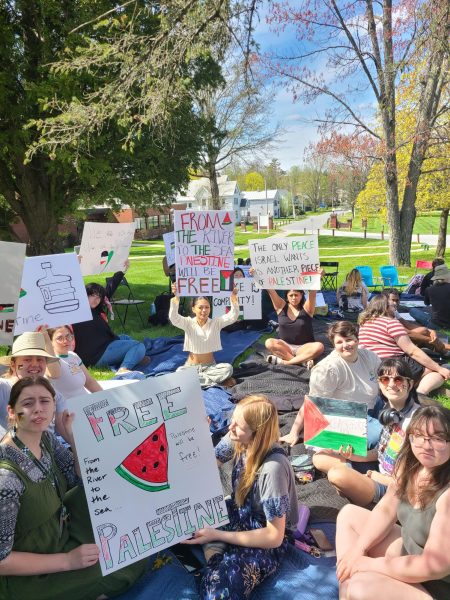The solution to opioid epidemic is not what you think
This commentary is by Dr. Rick Barnett, a clinical psychologist and addiction specialist in private practice in Stowe who founded Carter Inc. to expand addiction-related resources in Vermont. He is legislative chair and a past president of the Vermont Psychological Association, and serves as a member of several state health, mental health and addiction policy groups.
Opioids kill yet they save lives. Opioids are overprescribed yet they effectively treat pain. They can lead to addiction. They are used to treat addiction. The solutions we’ve come up with to stem the tide of opioid addiction and opioid fatalities conjure up Newton’s third law of motion: For every action, there’s an equal and opposite reaction. How does this apply to treatment, prevention and policy with regards to the opioid epidemic?
Our national and state-level restrictions on opioid prescribing practices are aimed at reducing the amount of prescription opioids that can be made accessible to misuse, and thereby progress to opioid addiction (painkillers, heroin, fentanyl, etc.). Successful and logical as this approach may be to prevent addiction and decrease opioid-related fatalities, the opposite is also true. Forcing chronic pain patients off a daily opioid regimen drives some to sucicide because of intolerable pain. It drives others to get opioids other than from a prescribing provider, with the possibility of death resulting.
The opioid overdose reversal drug naloxone (Narcan) is ever-expanding in accessibility. It has saved countless lives and should be as available as possible. But people are still dying. Often those who are revived from Narcan refuse treatment, continue using opioids, and die. Some are revived several times within a 24-hour period, with no follow-up care. A recent article describes how difficult it is to distinguish between intentional and unintentional opioid overdoses. Narcan, despite repeated administration in high doses, sometimes cannot override powerful opioids like fentanyl. Narcan is less effective in reversing an overdose when a person has alcohol, benzodiazepines or other meds in their system. Death still results despite access to Narcan.
We have several medications considered evidenced-based first-line treatments for opioid misuse disorder – naltrexone, methadone and buprenorphine. None is problem-free:
Naltrexone blocks opioids from attaching to cell receptors thus blocking any physiological or euphoric effects. This is a successful deterrent for many. It acts as insurance against relapse. Once one tries using an opioid, like heroin or oxycodone, while on naltrexone, it is quickly discovered to have no effect (and a waste of time, energy and money). However, once a period of abstinence is achieved and the naltrexone wears off, a person may relapse to opioids and, with a lower tolerance, death may result.
Methadone is a long-acting opioid that has been used as a treatment for heroin addiction for decades. Just as morphine was originally used to treat opium addiction and heroin was used to treat morphine addiction, methadone is used as maintenance to reduce the urge to use heroin or other opioids. It has helped thousands of people over the years. It has also contributed to a large number of opioid-related fatalities due to respiratory effects and interactions with other drugs and/or alcohol.
Buprenorphine, or Suboxone, is a less lethal alternative to methadone for maintenance treatment. It is and should be made even more accessible. And yet, once hailed as the best option for opioid use disorder, “bupe” or “subs” (as it is known on the streets) has become a “messy reality.” The combination of buprenorphine with other medications like anti-anxiety such as Xanax or Klonopin, stimulants like cocaine or Adderall, and alcohol or even other opioids is common: 75 percent of those with opioid related disorder have other addictions. Buprenorphine diversion and abuse is a significant issue. Death can still result directly or indirectly from using buprenorphine.
The continued rise in opioid-related fatalities may not be impacted by these policies, interventions or treatments. We will not arrest our way out of the problem. Evidence shows that mandating treatment through drug courts may also not be effective. We need to address this problem with more humanity.
Seeing someone overdose and die or be revived in the grocery story, in a restaurant, in their car or on the street is as alarming as it is educational. It is the most tragic prevention campaign ever. Those who are dying are teaching those of us who are living that addiction is a reflection of our own craving to find pleasure and relief from suffering. The kryptonite to addiction is not just human connections but also the collective wisdom we gain as we apply imperfect solutions to the complexity of addiction.
Newton’s first law of motion states: Things either remain at rest or continue to move at a constant velocity, unless acted upon by an external force. The external force required to slow the speed at which drug overdoses are killing us is a major wake-up call. In our current response to the opioid epidemic we are starting to realize we have a long journey ahead of us. Our collective commitment to community engagement will prevail. Let us continue in this journey together with PEP – Persistence, Empathy, Perspective. The solution to ever-increasing opioid-related deaths is found in our affirmation of life.



